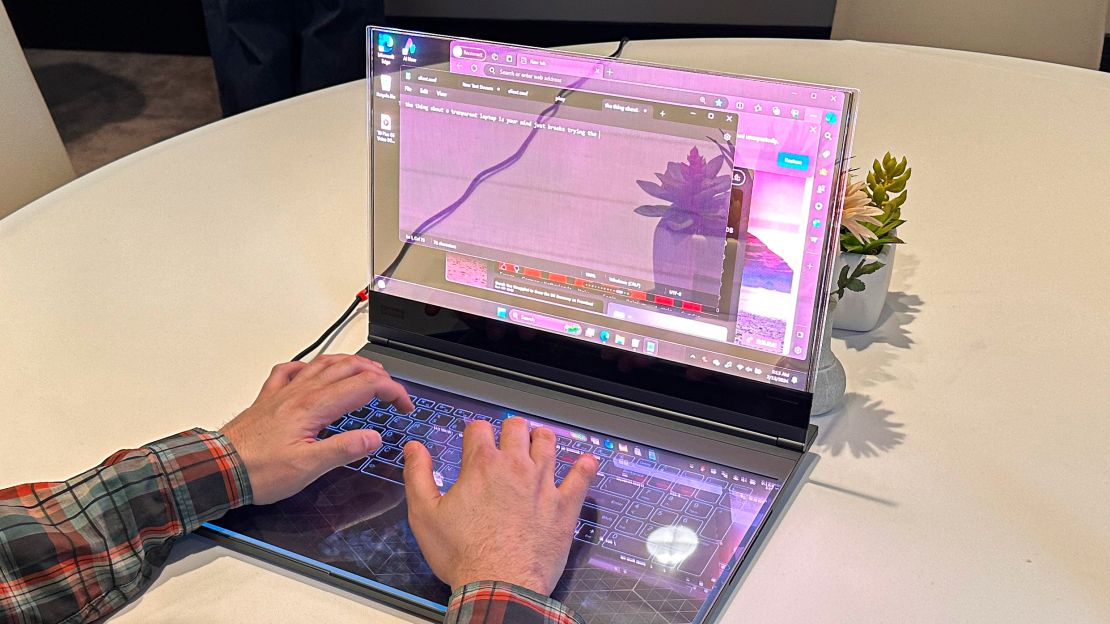The ThinkBook Transparent Display Laptop by Lenovo features a unique transparent screen and includes a drawing tablet. The next step for Lenovo is to find content that makes the most of this innovative design.
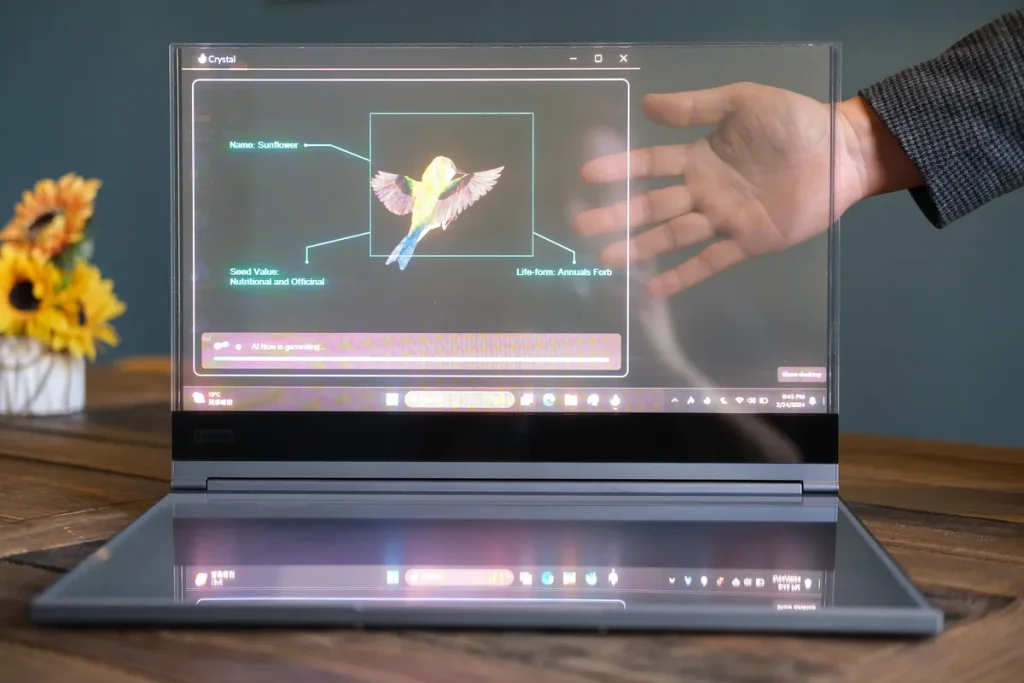
A year after unveiling a rollable laptop that could extend its screen with the push of a button, Lenovo has returned to the Mobile World Congress in Barcelona, Spain, with an even more futuristic concept device. Presenting the ThinkBook Transparent Display Laptop, this device features a 17.3-inch notebook with a screen that is completely see-through.
The standout feature of this laptop is its bezel-less 17.3-inch MicroLED display, capable of achieving up to 55 percent transparency when its pixels, set to black, are switched off. As the pixels illuminate, the screen gradually becomes less transparent, transitioning to a fully opaque white surface with a maximum brightness of 1,000 nits.
Transparent screens have long captivated audiences in sci-fi movies and TV shows, where the visual appeal is undeniable—opaque screens don’t offer the same intrigue as seeing actors’ faces through them. Yet, the real-world applications of such technology are less clear. It raises questions about the practicality of seeing through one’s screen in everyday use. How often would someone actually prefer to view the space behind their laptop? And could seeing a colleague through your screen offer any real benefit, or would it simply serve as a distraction?
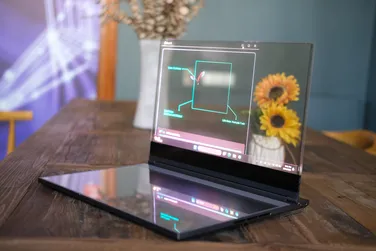
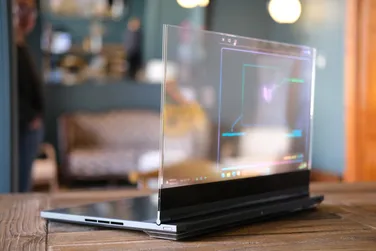
Lenovo believes this new laptop could be a game-changer for digital artists and architects. It allows them to see through the laptop’s screen to the world behind it, making it easier to sketch what they see directly onto the laptop. Tom Butler, a Lenovo executive, explained how he could trace objects like sunflowers placed behind the screen. He suggests this feature could let architects sketch buildings on-site without losing sight of their subject, likening the technology to augmented reality for blending digital and real-world views.
Lenovo joins a series of companies exploring transparent display technology. Over ten years ago, at CES 2010, Samsung unveiled a transparent laptop concept, and Lenovo also previously presented a transparent smartphone concept in 2015 through Zuk Mobile, a now-discontinued subsidiary. Over the years, there have been moves to bring such technology to the market. Transparent screens have been used in retail displays and on train windows in China and Japan. LG has even announced plans to release its OLED Signature T transparent TV this year, indicating a growing interest in making transparent display technology available to consumers.
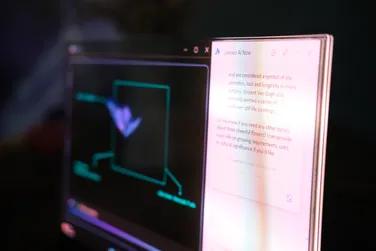
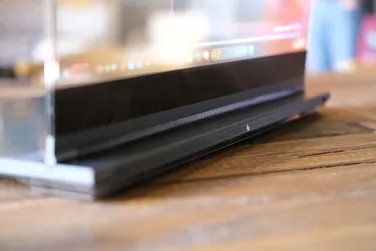
Making a laptop with a transparent screen is challenging, especially when it comes to making text look clear. Lenovo chose to use a MicroLED panel for their transparent laptop because it offers better resolution than OLED. The laptop’s 17.3-inch screen has a resolution of 720p. According to AG Zheng, a top executive at Lenovo, using OLED would have dropped the resolution to 480p. While 720p isn’t high for a laptop screen of this size, it does make sure that text is easy to read, showing that the technology is still developing.
A clear indication that Lenovo’s transparent laptop is still in the developmental phase is the current prototype’s inability to switch the entire screen to an opaque mode, regardless of the content being displayed. Tom Butler, a Lenovo executive, mentioned that achieving full opacity on demand is a goal for future production models, similar to how LG incorporates contrast film in its OLED T television to manage screen transparency.
Additionally, the concept laptop features a unique flat touch keyboard instead of traditional physical keys. Initially, this design choice might seem like just a futuristic touch, but it serves a practical purpose for digital artists. The flat surface doubles as a drawing tablet, expanding its utility beyond typing to offer a versatile tool for creative work. This innovation aligns with Lenovo’s vision of catering to artists’ needs, making the laptop not only a device for computing but also an artistic instrument.
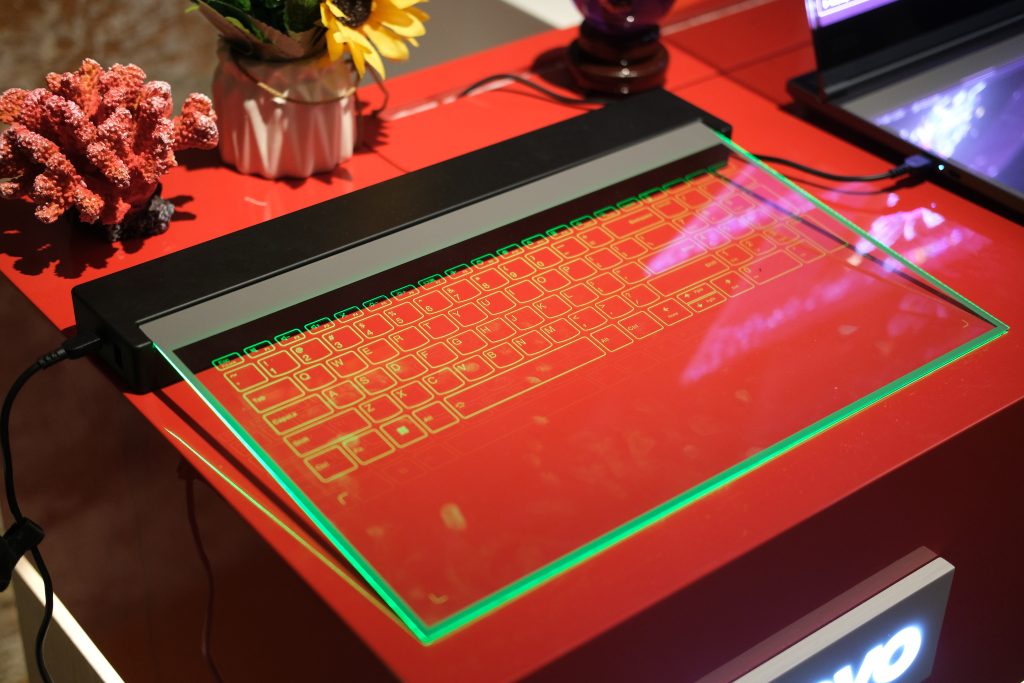
The laptop’s keyboard is not physical but a projection that vanishes when a stylus approaches the drawing area or when the user moves away from the laptop, leaving a flat surface ideal for sketching, much like a traditional Wacom tablet without a screen.
However, a significant drawback arises when not drawing: users must type on this flat, touch-sensitive surface, which proved to be the prototype’s most challenging aspect to adapt to. For those accustomed to the tactile feedback of mechanical keyboards, like the enthusiast mentioned, attempting to type on a projected keyboard image can lead to a frustrating number of typos, even when crafting a simple sentence.
In Lenovo’s 2024 demonstration, they integrated an AI feature using a small camera mounted on the back of the laptop’s frame to recognize objects placed behind it. This capability allowed the laptop to identify these objects and display relevant information or animations on the screen while they remained visible through the transparent display. For instance, placing sunflowers behind the laptop would prompt it to recognize and display them as sunflowers, complete with additional imagery like a butterfly fluttering around. Similarly, positioning a small coral model behind it would result in the display showing a fish swimming nearby, showcasing the technology’s proof-of-concept stage.
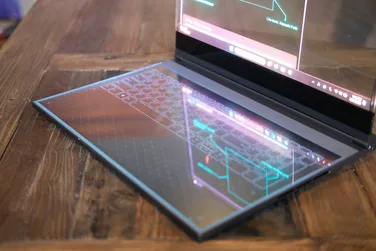
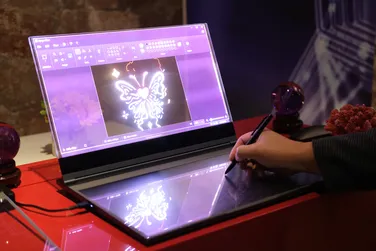
Similar to its rollable laptop introduced last year, Lenovo is not suggesting that the ThinkBook Transparent Display Laptop will hit the market as a consumer product anytime soon. However, Tom Butler expressed “very high confidence” that the technologies showcased will be integrated into a commercially available laptop within the next five years. He hopes that by unveiling this proof of concept, it will spark a public discussion on its potential applications, thereby establishing a goal for Lenovo to aim for in its future developments.
Lenovo’s transparent laptop, unlike its straightforward rollable laptop, is a mix of innovative tech still looking for its main purpose. Drawing on objects seen through the screen is cool but seems too specific, even for artists who could just use a photo instead. The AI features are interesting but feel more suited for museum exhibits than everyday use. So, for now, this eye-catching device offers some neat tricks without a clear, must-have function. This point was subtly made during an interview when a non-transparent MacBook was moved to glance at a phone behind it, highlighting the unique yet currently limited practicality of Lenovo’s transparent display.
Source:- Verge
